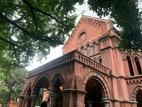In the past 20 years, the key factors that determine population flow have been the regional economic scale and the per capita income gap of each region in the country. The basic logic of population migration is that people follow the high trend and the industry. The impact of the pandemic in the past three years might break this rule of social mobility.
A few days ago, a pastor in Shenzhen finds some reasons why increasingly more young and middle-aged migrant workers choose to return to second-or third-tier cities or their hometowns to settle down and develop.
Over the past 20 years, the decline of rural churches and the rise of new-type churches in cities are closely related to urbanization and population migration, which is generated by the times. In recent years, more and more young and middle-aged migrant workers choose to return to the third-and fourth-tier cities and towns to develop. Will it also bring some influence to local Christian churches?
For example, pastors in first-and second-tier cities have found that the return of migrant workers to their hometowns has caused their churches to face greater population mobility, posing new challenges to pastoral care. At the same time, how can challenges be turned into opportunities? Can town-level churches seize this opportunity and get revival again? Such are topics to be closely focused on in the future.
Pastor Y from Shenzhen analyzes that there are three main reasons for the current population migration flow, that is, the high cost of living, the tide of layoffs, and the desire to settle down.
The high cost of living
Pastor Y points out, “At present, many factories and supply chains can’t circulate because of pandemic control and other reasons, rendering some companies unable to make profits and have normal capital flow. Knowing that dismissing employees for no reason is a violation of the labor law, some bosses use the strategy of giving employees unpaid leave after the company ceases business until the employees themselves resign. In the first-tier cities, the economic pressure on migrant workers is great, especially for families with children who need education. The high living expenses and rent in cities, coupled with transportation expenses, social occasions, or gift money (the Chinese custom of sending money to friends or relatives for illness, wedding, birth or funeral, etc., translator’s note), will make them consider the idea of returning to second-and third-tier cities. The locals in Shenzhen even rent out their own houses and go to Dongguan, Huizhou, and other cities to rent a room.”
The tide of layoffs
Pastor Y also gives the following example: “In 2022, the layoffs of young and middle-aged people in Shenzhen’s Internet industry also come rapidly, especially the big Internet companies that have passed the dividend and high-profit period. Most of them were already profitable and they entered the twilight stage. Therefore, big factories lay off old employees and employ new employees with low wages. After the non-management old employees lose their competitiveness, they are easily fired and lose their original living security. Affected by the pandemic, many employees in the sales industry or corporate headhunters who need to meet different company contacts are beginning to consider changing cities and jobs due to the reduced freedom of work, so it’s easy going out and difficult coming back.”
Settle down
“No matter how hard you work, it is very difficult for an office worker to buy an apartment in a super-first tier city. Nowadays, the trend of middle-aged people is that after 5-10 years of hard work in big cities, they are going to buy their own houses in second-and third-tier cities with these savings, so that they don’t have to pay back loans for decades. They are more willing to find a stable job there. Some migrant workers prefer to stay in their hometown economic development zone and plan to start a new business with the start-up capital at the bottom cost. In short, settling down is the reason why some people leave the north, Shanghai and Shenzhen,” Pastor Y added.
Afterword:
The changes observed by Pastor Y in the workplace are representative. No matter whether it’s in Shenzhen, Beijing, Shanghai or other first-and second-tier cities, migrant workers are leaving. Whether these people are well equipped for discipleship training in churches in these cities and can go to new places to become new gospel seeds is a matter that needs to be figured out thoroughly. At the same time, churches in third-and fourth-tier cities also need to actively prepare various utensils to better serve this group of young and middle-aged people.
- Translated by Charlie Li












